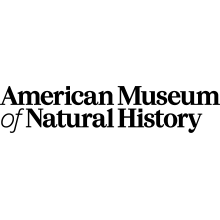Nonprofit Directory

American Museum of Natural History
Culture USADetailed Company Info:
You can find the latest publicly available info for American Museum of Natural History:
- Financials
- Brand Guide
- Tech Stack
- Ad Transparency
- Reviews
Financials
Explore a Nonprofit Organization's latest available financial statements
Ad Transparency
Discover which active ads Nonprofit Organization's are running across platforms. *Some results might not be available due to location, platform, or other restrictions.
Reviews
Reviews and ratings from former and current staff. *An account may be needed to access this information.
Company Description :
The American Museum of Natural History (AMNH) is a natural history museum on the Upper West Side of Manhattan in New York City. Located in Theodore Roosevelt Park, across the street from Central Park, the museum complex comprises 20 interconnected buildings housing 45 permanent exhibition halls, in addition to a planetarium and a library. The museum collections contain about 32 million specimens of plants, animals, fungi, fossils, minerals, rocks, meteorites, human remains, and human cultural artifacts, as well as specialized collections for frozen tissue and genomic and astrophysical data, of which only a small fraction can be displayed at any given time. The museum occupies more than 2,500,000 sq ft (232,258 m2). AMNH has a full-time scientific staff of 225, sponsors over 120 special field expeditions each year, and averages about five million visits annually.
The AMNH is a private 501(c)(3) organization. The naturalist Albert S. Bickmore devised the idea for the American Museum of Natural History in 1861, and, after several years of advocacy, the museum opened within Central Park’s Arsenal on May 22, 1871. The museum’s first purpose-built structure in Theodore Roosevelt Park was designed by Calvert Vaux and J. Wrey Mould and opened on December 22, 1877. Numerous wings have been added over the years, including the main entrance pavilion (named for Theodore Roosevelt) in 1936 and the Rose Center for Earth and Space in 2000.